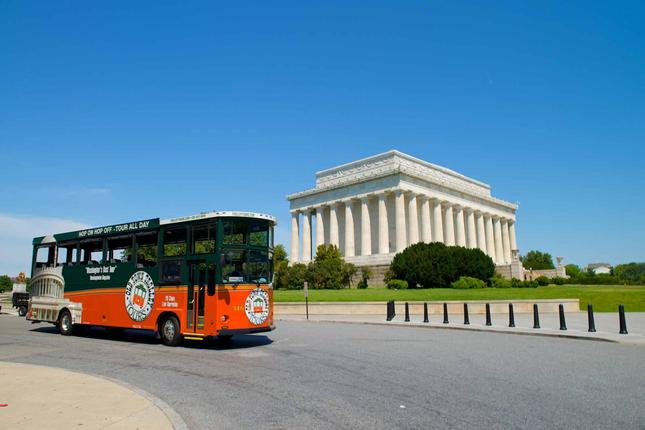Ralph Blane, co-composer with Hugh Martin of “The Trolley Song” – made famous by the 1944 film “Meet Me in St. Louis” – said he was inspired to write the award-winning song after he saw a photo of a trolley car in a 1900 newspaper, captioned, “Clang, clang, clang went the trolley.”
The concept that trolley cars, or streetcars, are nostalgic reminders of a romantic past must be what caught the imagination of at least three recent mayors of Washington, D.C., and that of many of the city’s inhabitants. But before we commit to the current proposed trolley lines, maybe we should take a look at the District’s checkered history with this mode of transportation.
The first form of public transportation in many U.S. cities, including Washington, was horse-drawn trolley cars that had steel tires and ran on rails flush with the pavement. These were popular from the 1860s through the 1890s, when they were replaced with electric trolley cars – a lot cleaner and easier to keep than horses. And, unlike the horse-drawn streetcars, they could climb steep hills, leading to the ever-expanding boundaries of the city and up Wisconsin and Connecticut Avenues to the new suburb of Chevy Chase.
When Congress approved the switch to electric streetcars, it prohibited overhead wiring and insisted that the electric cables be buried in the roads next to the tracks. This caused the system to suffer from the expansion and contraction caused by the summer heat and the winter cold. Historian Robert C. Post noted that the “demands of routine maintenance were relentless.” Nevertheless, streetcars were the main mode of public transportation for Washingtonians for many years.
The streetcars’ demise came about when a perfect storm of problems finally became insurmountable. By 1933, the consolidation of many streetcar companies resulted in the Capital Transit Company, which, in the beginning, had ample funds to deal with the constant repair problems, even though the increase in family-owned automobiles continued to chip away at streetcar ridership. As the number of riders decreased, the company was sold to a group of investors. Paying much less than the company’s value, these investors commenced to reward themselves with large dividends, depleting company reserves.
At the same time, the unions decided that their streetcar workers had gotten cheated out of their share of the riches. In 1951, they went on strike, creating what the AP reported to be “the biggest traffic jam in history,” with people abandoning their cars in the middle of downtown streets next to empty streetcars and trudging the rest of the way to work in the stifling summer heat.
After strikes erupted again in 1955, Congress decided to step in and take the company away from the greedy investors. It was sold to O. Roy Chalk, a New York entrepreneur who had to promise to close down the streetcar system and change it to 100-percent bus service, which he did. The last streetcar line went out of service in 1962. Schoolchildren were given the treat of riding on the last trolley, after which it was shrouded with black crepe and a mourning wreath.
We can only hope that if trolley service ever actually returns to the District, there won’t be a repetition of this history. Meanwhile, we can get in the mood to embrace the concept by singing “The Trolley Song” with Judy Garland, or the song in which Tony Bennett made the little cable cars of San Francisco so unforgettable.
Donna Evers is the owner and broker of Evers & Co Real Estate Inc., the largest woman-owned and woman-run real estate firm in the metropolitan area, and the proprietor of Twin Oaks Tavern Winery in Bluemont, Virginia. Reach her at devers@eversco.com.


